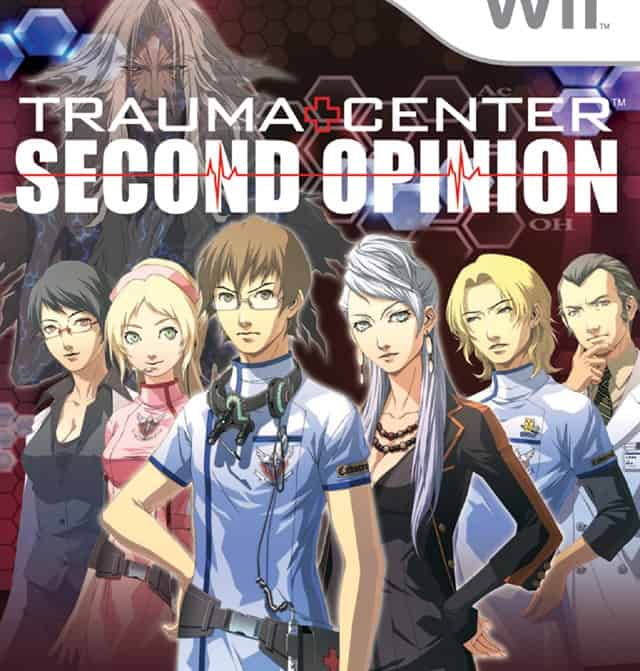You can trust VideoGamer. Our team of gaming experts spend hours testing and reviewing the latest games, to ensure you're reading the most comprehensive guide possible. Rest assured, all imagery and advice is unique and original. Check out how we test and review games here
It’s an unfortunate reality that Europe often gets the short straw when it comes to gaming. Many games and consoles arrive late and over priced when compared to Japan and the USA, and all we can really do is shrug our shoulders or resort to importing – and Sony don’t want us to do that either! As much as I’d like to sulk about this unfortunate circumstance – and I really would like to – life goes on and we have to bear with such problems. All the same, it’s a severe disappointment to know that right now our North American cousins are enjoying Trauma Center: Second Opinion, whilst we in Europe will have to wait until next year for such a pleasure. That it appears to be one of the best of the early crop of Wii titles makes the disappointment all the more acute.
For those not aware, Trauma Center: Second Opinion on Wii is a remake – or a Wii-make as some like to call it – of Trauma Center: Under the Knife for the DS. Under the Knife utilised the DS touch screen to create a truly original concept: a medical surgery game where you make incisions, suture wounds and perform all manner of medical procedures. It has a reputation for being a relentlessly difficult game, and it was unfairly over-shadowed by Phoenix Wright: Ace Attorney back when crazy Japanese game concepts were all the rage.
Just like the original, Second Opinion has you playing the role of Dr. Derek Stiles; a young and naïve surgeon who relies just a little too much on his nurses for advice. The deadly threat of his time is a terrorist-engineered virus known as GUILT, and Dr. Stiles inadvertently becomes key in the fight against this dangerous virus. This is because he has a special ability, a power if you will, and this ability puts him – and you – at the centre of the battle against this evil creation.
There are six chapters in all, with each chapter containing several episodes and the occasional side-episode. Most of the story develops through textual conversations, involving a large cast of characters that are hand drawn in exquisite Animé style. Indeed, all this text is probably the cause of the delay since all of it will require translating into the various languages of Europe.
Most episodes consist of briefings and operations that have a five-minute time limit. Should you fail to complete the operation in time you will fail, and this time limit certainly adds a layer of tension to proceedings. It also makes Second Opinion a great game for playing in short bursts, though it’s long enough and addictive enough to play for hours on end.
Predictably, however, it’s Second Opinion’s use of the Wii Remote and Nunchuck attachment that make it such a promising title. As clever as the touch screen control on the DS may be, the Remote and Nunchuck offer a great deal more variety of movement, and developers Atlus have made good use of it. The basic controls are very simple, with the stick on the Nunchuck used to select your weapon – ahem, I mean tool – of choice and the remote used for all the delicate actions, such as making incisions and sewing people back together.
A good example of a new control mechanic comes in one of the new sub-quests, which has you using the Wii’s tilting ability to rotate and reorganise the shattered bones of a patient. In essence, it’s little more than a three-dimensional jigsaw puzzle but this description belies how fun it is to perform.
The best change, however, is the fantastic use of the defibrillator – you know the thing where the doctor says “clear” and the patient’s chest jerks toward the ceiling – and its use in operations is always great fun. When your patient needs a shock a power bar will appear on screen and you have to push forward with the Remote and Nunchuck, as if they were real paddles, and press the B and Z buttons within a band to successfully revive the patient. This may sound easy enough, but when your patient is constantly going into arrest, with time ticking down and the pressure mounting quickly, it can be a tricky procedure to pull off successfully.
Speaking of pressure, operations don’t develop in a simple way, and complications build up and up to create some truly tense situations. How should I do this? What should I concentrate on first? Is the patient’s heart rate stable? How much time to do I have left? These sorts of questions are your constant companion while playing Second Opinion and though it isn’t a realistic simulation – not by a long distance – it does recreate the sort of tension your imagination would expect.
The only real positive resulting from Second Opinion missing the Wii’s European launch is it’ll give you more time to play Zelda, which is supposedly more epic than ever. This would have been a perfect accompaniment to Zelda, something old with something new, but suffice to say when Trauma Center: Second Opinion eventually hits our shores it should be well worth your consideration.






